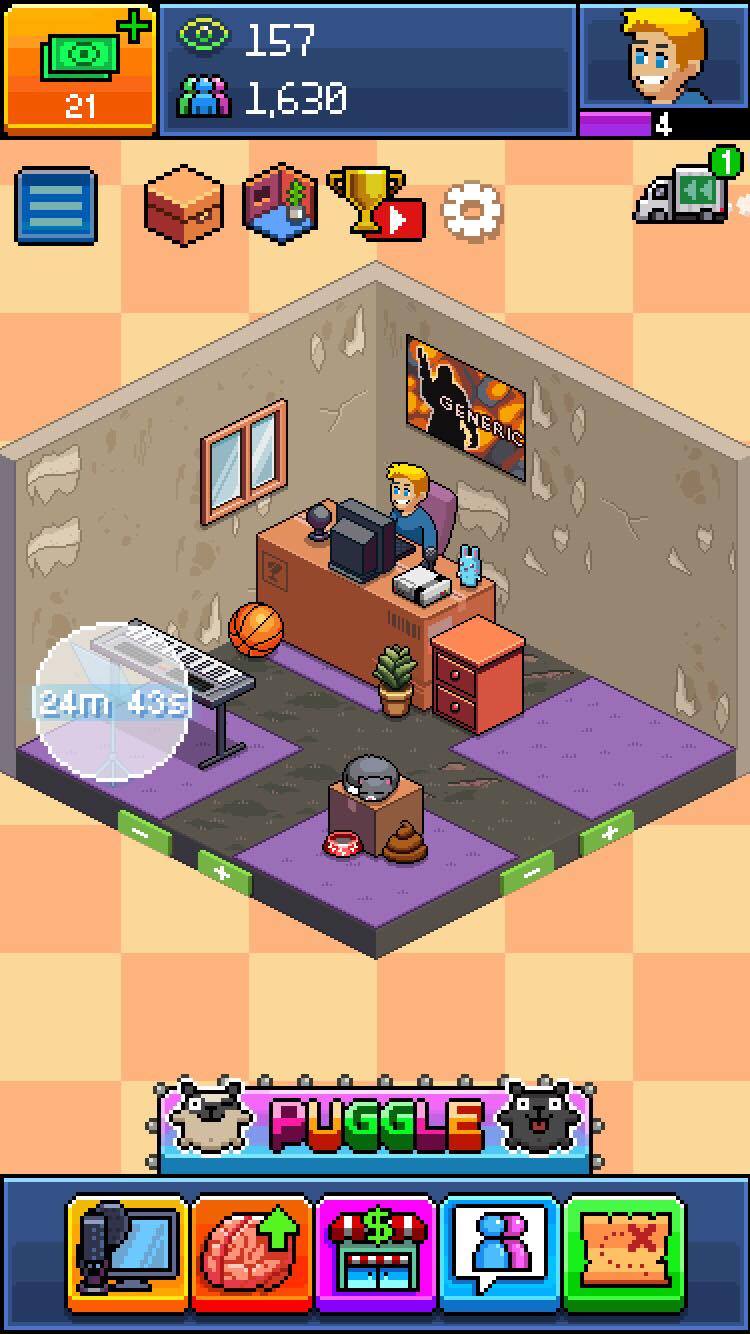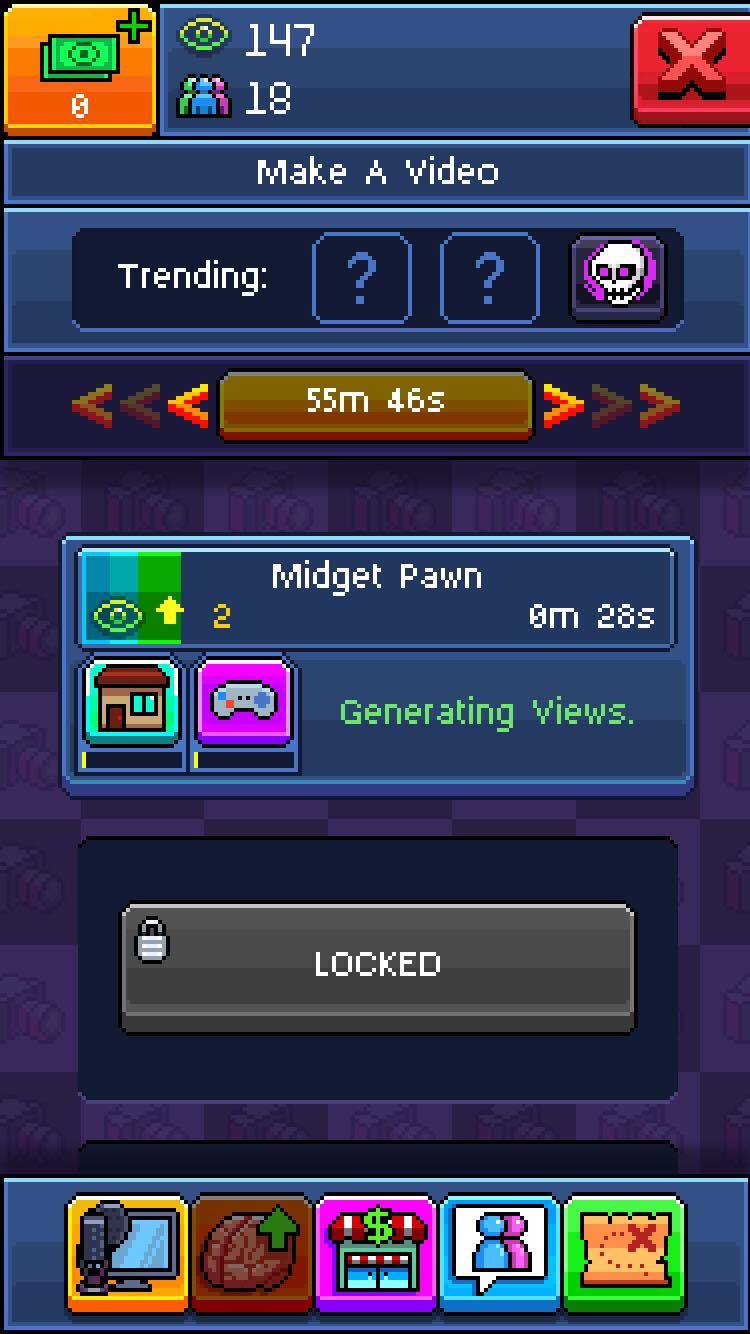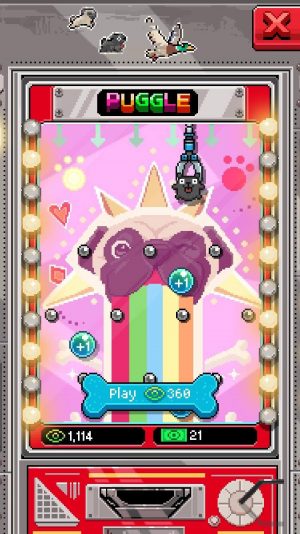 Back in the early 2000s, myself and millions of other gamers and wanna-be musicians alike spent hundreds of hours playing the Guitar Hero series. It dawned on me pretty early on that I was never going to be Thom Yorke or Tom Morello, so I settled with the next best thing – clicking a plastic controller in the shape of a guitar in time to music on a screen. If PewDiePie’s Tuber Simulator (Free) is equally indicative of the career of an online video maker, I sympathise somewhat with the Swedish celebrity’s plight – having a job consisting purely of decorating your living space, waiting for items to be delivered, and having to deal with eagle couriers invading your home every couple of minutes does not sound like the dream occupation many envision it to be. In all seriousness, Tuber Simulator is not the next Game Dev Story ($4.99), and nor does it try to be – with some rather simple yet intricate and absorbing gameplay, coupled with PewDiePie’s signature humor and charm that is bound to go down well with his millions of die-hard fans, the game strikes a perfect balance between not taking itself seriously while being intriguing enough to keep interest long after the first cardboard box has been bought.
Back in the early 2000s, myself and millions of other gamers and wanna-be musicians alike spent hundreds of hours playing the Guitar Hero series. It dawned on me pretty early on that I was never going to be Thom Yorke or Tom Morello, so I settled with the next best thing – clicking a plastic controller in the shape of a guitar in time to music on a screen. If PewDiePie’s Tuber Simulator (Free) is equally indicative of the career of an online video maker, I sympathise somewhat with the Swedish celebrity’s plight – having a job consisting purely of decorating your living space, waiting for items to be delivered, and having to deal with eagle couriers invading your home every couple of minutes does not sound like the dream occupation many envision it to be. In all seriousness, Tuber Simulator is not the next Game Dev Story ($4.99), and nor does it try to be – with some rather simple yet intricate and absorbing gameplay, coupled with PewDiePie’s signature humor and charm that is bound to go down well with his millions of die-hard fans, the game strikes a perfect balance between not taking itself seriously while being intriguing enough to keep interest long after the first cardboard box has been bought.


Firstly, while some comparisons to Kairosoft’s series of games have been bandied about prior to Tuber Simulator’s release, such resemblances start and end at the isometric perspective and the pixel art graphics of your studio. Instead, think of Tuber Simulator more in the vein of Tiny Tower (Free), and other successful clickers on the App Store. The extent of control you have over your video directing career is relatively limited – you can design your room with a whole host of items, equipment, and furniture, ranging from something as standard as a webcam, to pets, and some other childish creations that will satiate any fans of meme culture or more alternative humor, and by extension many of PewDiePie’s fanbase. You also have the option to choose what type of video you wish to create, through deciding between three options that each contain a witty title and two of ten genre labels, which can be developed through tactical purchasing of certain items for the studio. At its core, Tuber Simulator is more about waiting than actually being involved with creating content, and while this isn’t necessarily a bad thing – especially for fans of similar titles – the game is best being played in short bursts, which can feel frustrating for anyone wanting to progress their career fast.

While there is a degree of depth and a sense of progression in the level up system, where you can choose to focus on certain genres, or upgrade views obtained per video and a whole array of other options, PewDiePie’s Tuber Simulator stands out from other idle games through its abundant charm and humor. During the tutorial for the game, PewDiePie himself voices a significant amount of dialogue explaining the ins and outs of Tuber Simulator, all with his signature sarcasm and self-deprecating jokes. Even to someone with little experience of his YouTube channel, a lot of the humor is rather enjoyable and gives a game its own personality – specifically, PewDiePie’s personality. Make no mistake – Tuber Simulator isn’t a mere cash in, but a game full to the brim with fan service, and made to specifically appeal to fans of the internet celebrity, with both literal text-based references, but also some varied mini games to add some involvement to an otherwise sedentary experience. A ‘Sponsor Eagle’ occasionally flies through your room, and can be clicked to obtain items, but the highlight is ‘Puggle’, which takes influence from Peggle in both name and gameplay, and can be used to shorten delivery times for items. While such references will no doubt please PewDiePie fans, to anyone else it all seems extremely bizarre and random, which will compel you to keep playing to see what ridiculous event may occur next.

The ever present elephant in the room with any free-to-play game is how the in app purchase mechanics work, and the initial comparisons to Tiny Tower are thankfully consistent in this aspect of Tuber Simulator as well. There are a whole host of currencies within Tuber Simulator, including views, subscribers, knowledge and ‘bux’, which at first may seem daunting, and reminiscent of any typical clicker that is looking to ensnare both your money, as well as your free time. In practice, however, Tuber Simulator doesn’t really require much external investment, as the only currency available for purchase are the ‘bux’, which are only really used for expanding your studio, and speeding up certain processes, all of which can be accomplished through waiting, and by playing the game in short bursts. The other currencies are obtainable by playing the game, and are awarded extremely generously through a whole host of rewards and missions, and at no point did I feel like Tuber Simulator was aggressively pushing its in app purchases upon me. While you will be watching a lot of advertisements to double views and shorten certain timers, it’s a testament to how enjoyable assembling my perfect studio was that I had no objection to sitting through yet another thirty second video for some App Store shovelware if it would help me obtain even more kittens for my room.

The main problem with trying to review Tuber Simulator is that attempting to describe the game in words doesn’t really do it justice. While unravelling and evaluating every feature of the title may suggest it is somewhat shallow – and in reality, it probably is – when you get hooked on Tuber Simulator, the combination of all the elements, such as the beautiful pixel art graphics and excellent chip tune soundtrack, the corny jokes and surprisingly dark randomly generated video names, and the fact there is always something to keep playing towards make it a memorable experience that is more than the sum of its parts. Ultimately, Tuber Simulator will live and die on how the game opens up further and diversifies in successive updates, and whether it has enough staying power to remain essential a few months down the line. While there are some online options that will allow you to share your studio with other players around the world – and in effect set up your own faux YouTube channel within the game – these have been inconsistent to non-existent in the few weeks after launch, and even without such issues, it’s not clear how much of an effect they will have beyond the gaming and PewDiePie community. The entertaining comments from the man himself begin to become more scarce as the game progresses, and without these a lot of the charisma that helps the game excel is lost.
Going back to the initial Guitar Hero analogy, Tuber Simulator is indicative of a far broader cultural impact, both within gaming as a whole and outside of it. From one perspective the game, and its immense popularity after launch that saw it rocket to number one of the iTunes charts, is representative of how Nickelback were wrong, and we don’t all wanna be big rock stars – children growing up in 2016 dream of emulating the career path of YouTubers such as PewDiePie, and of making their name through viral, interactive content, rather than following in the shoes of their musical heroes. However, from another angle, and one far more consequential to the gaming industry, Tuber Simulator is symbolic of a trend towards passive, free and instantly accessible experiences, rather than the cumbersome, costly and highly involved alternatives – both in the rhythm genre that took the world by storm ten years ago, and the traditional format of video games at large. This may upset some who yearn for fully priced console experiences – and long may such options remain available to those who desire them – but I’m okay with it, especially when the products of such a paradigm shift are as compulsive, compelling, and full as charm as this.